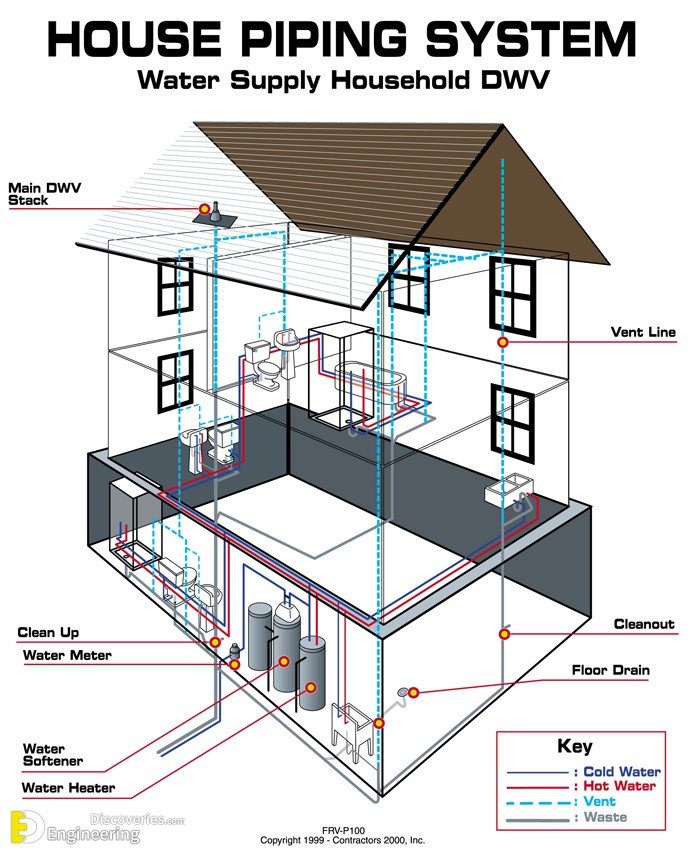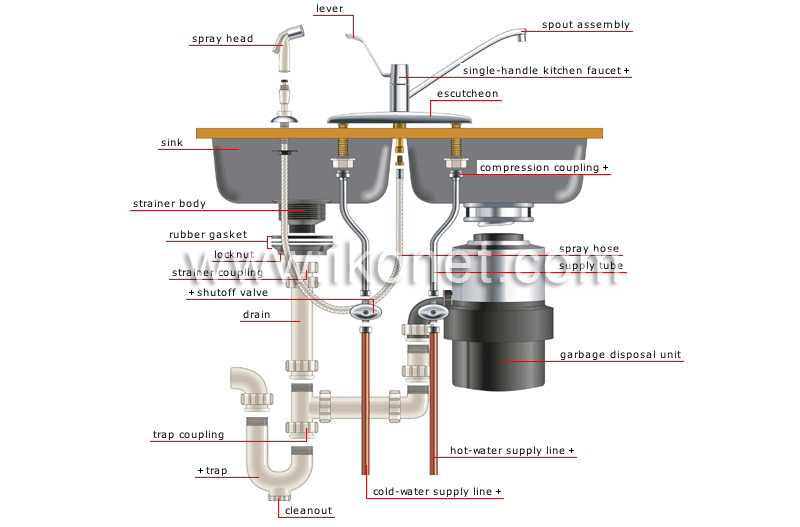This great article following next involving Anatomy of a House: Understanding the Components is particularly insightful. You should give it a look.

Understanding how your home's plumbing system works is important for each property owner. From providing tidy water for alcohol consumption, food preparation, and showering to safely removing wastewater, a well-kept pipes system is critical for your family members's wellness and convenience. In this thorough guide, we'll discover the detailed network that comprises your home's plumbing and deal ideas on upkeep, upgrades, and managing usual concerns.
Intro
Your home's pipes system is greater than simply a network of pipelines; it's an intricate system that ensures you have access to clean water and reliable wastewater removal. Knowing its elements and how they collaborate can help you stop expensive repair services and make certain whatever runs smoothly.
Fundamental Parts of a Pipes System
Pipelines and Tubes
At the heart of your pipes system are the pipelines and tubes that carry water throughout your home. These can be made of numerous products such as copper, PVC, or PEX, each with its advantages in terms of toughness and cost-effectiveness.
Fixtures: Sinks, Toilets, Showers, and so on.
Components like sinks, bathrooms, showers, and tubs are where water is utilized in your home. Comprehending exactly how these fixtures attach to the pipes system assists in identifying problems and intending upgrades.
Shutoffs and Shut-off Points
Valves control the circulation of water in your pipes system. Shut-off valves are crucial during emergency situations or when you need to make repair services, permitting you to separate parts of the system without interrupting water flow to the entire house.
Water System
Main Water Line
The major water line attaches your home to the metropolitan water system or a private well. It's where water enters your home and is dispersed to different fixtures.
Water Meter and Pressure Regulatory Authority
The water meter procedures your water usage, while a stress regulatory authority ensures that water flows at a secure stress throughout your home's plumbing system, preventing damages to pipelines and fixtures.
Cold Water vs. Hot Water Lines
Recognizing the difference between cold water lines, which supply water directly from the major, and warm water lines, which carry heated water from the hot water heater, helps in troubleshooting and preparing for upgrades.
Drain System
Drain Water Lines and Traps
Drain pipes carry wastewater far from sinks, showers, and bathrooms to the drain or septic tank. Traps protect against drain gases from entering your home and also catch particles that could create blockages.
Ventilation Pipelines
Ventilation pipelines enable air into the water drainage system, avoiding suction that might slow down drainage and create traps to empty. Proper air flow is necessary for preserving the integrity of your pipes system.
Significance of Appropriate Drainage
Making certain appropriate drainage stops backups and water damages. Frequently cleaning drains pipes and maintaining catches can avoid pricey repair work and expand the life of your plumbing system.
Water Furnace
Kinds Of Hot Water Heater
Water heaters can be tankless or typical tank-style. Tankless heating units warmth water on demand, while containers keep warmed water for immediate use.
Just How Water Heaters Link to the Pipes System
Understanding just how water heaters link to both the cold water supply and warm water distribution lines assists in detecting problems like not enough hot water or leakages.
Upkeep Tips for Water Heaters
Routinely flushing your hot water heater to remove debris, examining the temperature setups, and inspecting for leaks can prolong its life-span and improve power performance.
Common Plumbing Concerns
Leakages and Their Causes
Leakages can take place due to aging pipelines, loosened fittings, or high water pressure. Resolving leaks quickly avoids water damages and mold and mildew growth.
Blockages and Obstructions
Obstructions in drains and bathrooms are usually caused by flushing non-flushable products or an accumulation of oil and hair. Utilizing drainpipe displays and being mindful of what goes down your drains can stop clogs.
Indications of Plumbing Issues to Look For
Low tide stress, slow drains pipes, foul odors, or abnormally high water expenses are indications of prospective pipes troubles that must be addressed promptly.
Plumbing Maintenance Tips
Routine Assessments and Checks
Set up yearly pipes examinations to capture concerns early. Seek indicators of leakages, deterioration, or mineral accumulation in taps and showerheads.
DIY Upkeep Tasks
Simple tasks like cleaning faucet aerators, checking for commode leakages making use of dye tablet computers, or shielding exposed pipes in cool climates can stop significant plumbing issues.
When to Call a Professional Plumber
Know when a plumbing problem calls for expert expertise. Trying complicated repair work without proper expertise can cause even more damage and higher repair expenses.
Updating Your Plumbing System
Reasons for Upgrading
Updating to water-efficient components or changing old pipelines can boost water high quality, minimize water expenses, and raise the worth of your home.
Modern Plumbing Technologies and Their Benefits
Explore technologies like smart leakage detectors, water-saving bathrooms, and energy-efficient water heaters that can save money and lower ecological effect.
Price Factors To Consider and ROI
Determine the in advance costs versus lasting savings when thinking about plumbing upgrades. Several upgrades pay for themselves via minimized utility bills and fewer fixings.
Ecological Impact and Preservation
Water-Saving Fixtures and Devices
Setting up low-flow taps, showerheads, and toilets can substantially decrease water use without compromising performance.
Tips for Lowering Water Use
Easy habits like dealing with leaks without delay, taking much shorter showers, and running full lots of laundry and recipes can save water and reduced your energy bills.
Eco-Friendly Pipes Options
Consider sustainable pipes materials like bamboo for floor covering, which is durable and eco-friendly, or recycled glass for countertops.
Emergency Readiness
Actions to Take During a Plumbing Emergency situation
Know where your shut-off valves are located and how to shut off the water system in case of a ruptured pipe or major leakage.
Importance of Having Emergency Situation Calls Handy
Keep get in touch with information for regional plumbing professionals or emergency services readily offered for quick feedback during a plumbing dilemma.
Do It Yourself Emergency Fixes (When Appropriate).
Momentary solutions like making use of duct tape to patch a leaking pipe or putting a pail under a trickling tap can lessen damages until an expert plumber shows up.
Verdict.
Recognizing the makeup of your home's plumbing system empowers you to maintain it efficiently, conserving money and time on repair work. By complying with routine upkeep regimens and staying informed regarding modern-day pipes technologies, you can ensure your plumbing system runs successfully for years to come.
Exploring Your Homes Plumbing Anatomy
Water Supply System
- Main Water Line: This is where water enters your home from the municipal supply or a private well.
- Water Meter: Typically located near where the main water line enters the property, it measures the amount of water used.
- Shutoff Valve: It s crucial to know where this is in case of emergencies. It allows you to turn off the water supply to the entire house.
- Pipes and Fittings: These distribute water throughout your home. Materials can include copper, PVC, or PEX.
Drain-Waste-Vent (DWV) System
- Drains: Located in sinks, showers, and tubs, these carry wastewater away.
- Traps: U-shaped pipes under sinks that hold standing water, blocking sewer gases from entering the home.
- Vents: Pipes that lead from the DWV system to the outside, preventing vacuum formation and allowing gases to escape.
- Sewer Line: Carries all wastewater from the home to the municipal sewer system or a septic tank.
Fixtures and Appliances
- Sinks, Toilets, and Showers
- Dishwashers and Washing Machines
- Water Heaters
Maintenance Tips
- Regularly check for leaks in exposed pipes and around fixtures.
- Inspect the water heater annually for signs of wear.
- Clean drains and traps to prevent clogs and odors.
- Know how to shut off water to individual fixtures.
When to Call a Professional
- Major leaks or burst pipes
- Installation of new pipes or fixtures
- Septic tank issues
- Remodeling projects that involve plumbing changes
Conclusion
Understanding the anatomy of your home's plumbing is key to maintaining a functional and efficient system. Regular checks and knowing when to call in the experts can save you time, money, and stress.
https://www.mavyn.com/blog/exploring-your-homes-plumbing-anatomy

I found that blog entry about Anatomy of a House: Understanding the Components while surfing the web. Appreciated our write-up? Please share it. Let someone else check it out. We treasure your readership.
Call Today
Comments on “The Fundamental Elements of Your Property's Plumbing System”